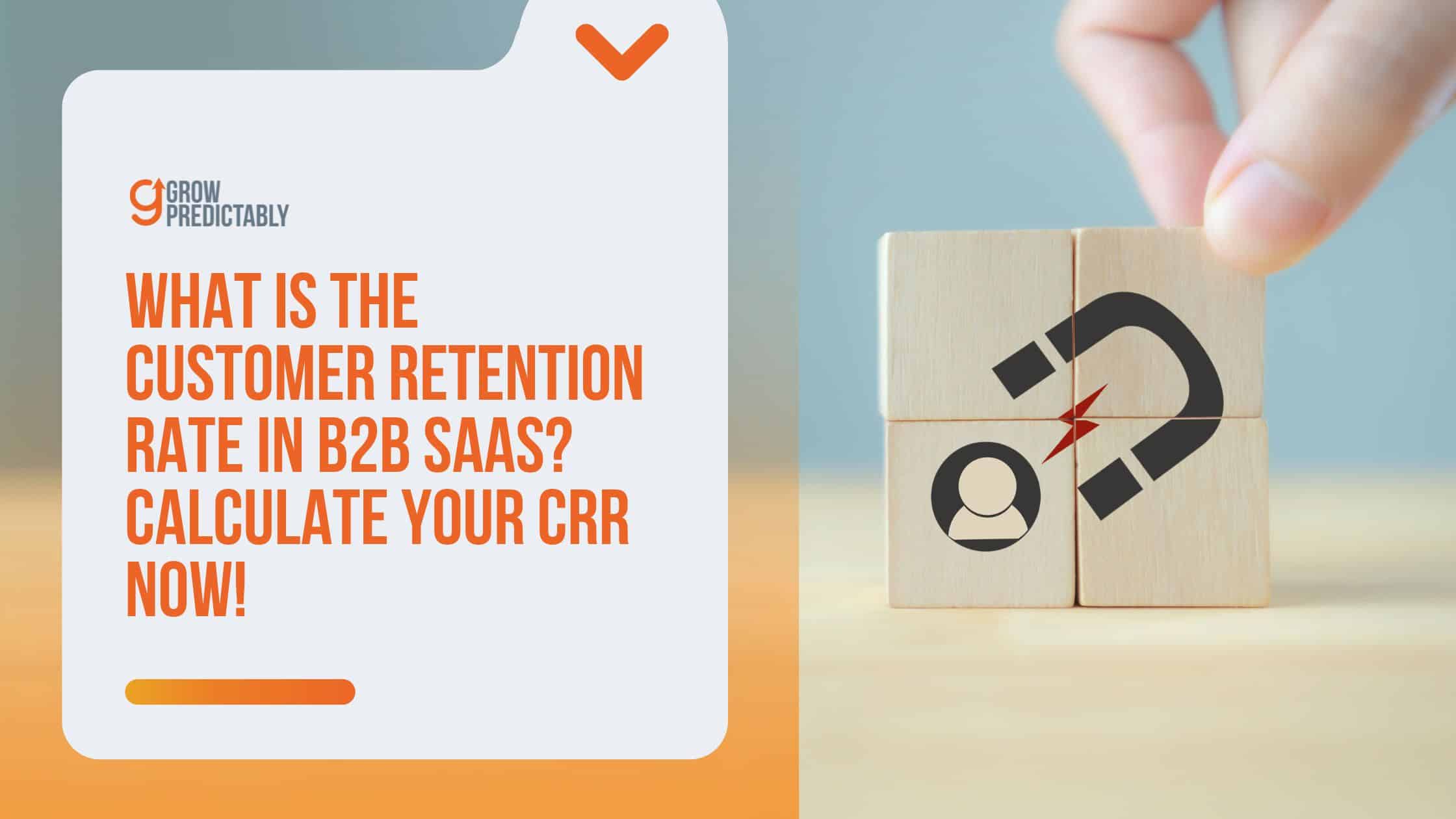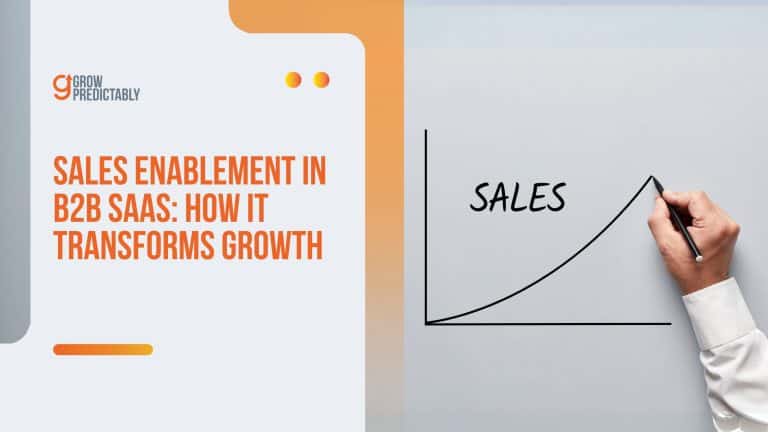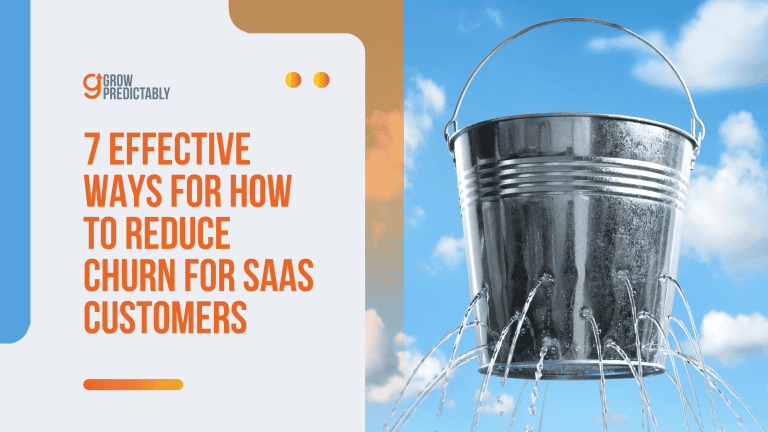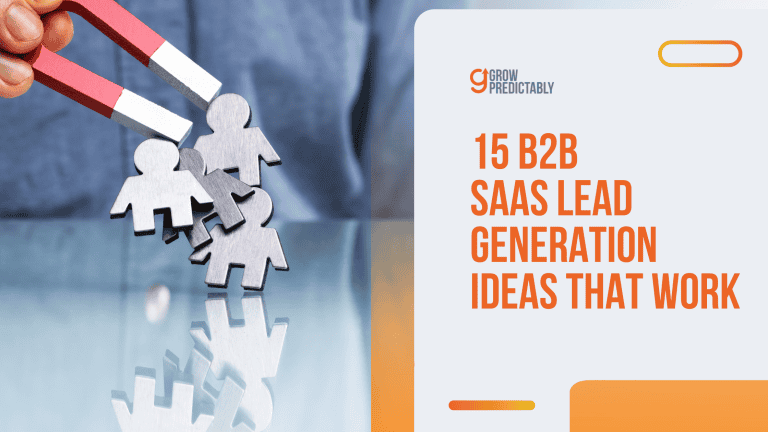What is Customer Retention Rate in B2B SaaS? Calculate Your CRR Now!
If you’re running a SaaS business, it’s pretty important to understand what “customer retention rate” means.
It’s one of the most ‘must-learn’ B2B marketing terms out there.
Basically, it’s all about how well you’re keeping your customers around after they’ve signed up.
Think of it like hosting a party: if you threw a great bash and out of 100 friends, 80 showed up at your next one, that means you have an 80% retention rate.
So, why does this matter in a SaaS business?
Much like parties, it’s generally easier and more cost-effective to keep your existing friends (or customers) rather than trying to make new ones every time.
Customers who stick around tend to spend more and will likely spread the word about the great experiences they’re having with your service.
Understanding customer lifetime value is crucial here, as it helps measure the long-term profitability of retaining these customers.
By tracking your customer retention rate, you can see whether your customers are really enjoying themselves or if they might be looking for an exit.
The higher your retention rate, the better your business is performing.
Let’s break this down in simpler terms.
What is the Customer Retention Rate in Layman’s Terms?
Retention means keeping something.
Think of it like holding onto your favorite toy and not losing it.
When you keep your toy safe, you retain it.
Now, customer retention rate is about keeping existing customers coming back to do more business with you.
Imagine you run a lemonade stand. Every day, some people buy your lemonade.
If most of those people come back the next day to buy more, you’re good at retaining customers.
So, what’s the big deal?
If your loyal customers keep coming back, that means they like what you’re selling!
It also saves you time and effort because finding new customers takes more work.
Happy, returning customers can also tell their friends, bringing you even more business.
That’s free marketing right there!
So, in simple terms, retention is about your business’s ability to not lose existing customers.
For instance, if you had 100 customers at the start of the month and 80 of them returned by the end of the month, your customer retention rate would be 80%.
This customer retention rate example shows how to calculate the rate and track progress over time.
Now, how can good customer retention management benefit a SaaS business?
Here’s how…
Why Is Customer Retention Rate Important in B2B SaaS?
SaaS businesses can’t afford to overlook retention.
Businesses often concentrate heavily on getting new clients, but keeping loyal customers can be just as essential, if not more so, for long-term success.
Implementing a robust customer retention strategy, which includes evaluating key performance indicators (KPIs) like repeat purchase ratios and product return rates, is crucial for mitigating customer churn and fostering customer loyalty.
Here, let’s quickly review why customer retention is so relevant in a B2B SaaS setting:
1. Cost Efficiency
Acquiring new customers tends to be significantly more expensive than retaining existing ones.
Marketing campaigns, sales processes, and onboarding efforts all add up.
SaaS businesses can reduce these costs and improve their bottom line by focusing on customer retention.
Improving customer retention is crucial as it not only sustains customer relationships but also contributes to overall revenue growth.
Existing customers, already familiar with the product, require less convincing and support, making them less resource-intensive to maintain.
2. Revenue Stability
High customer retention rates contribute to a more predictable and stable revenue stream.
In a subscription-based model, losing customers can have a direct and immediate impact on monthly recurring revenue (MRR).
Retained customers provide consistent income, allowing for more accurate financial forecasting and better resource allocation.
Maintaining a high customer retention rate not only leads to increased revenue from repeat purchases but also serves as a measure of customer satisfaction and loyalty, making it a vital part of any business strategy aimed at long-term success.
This stability is crucial for long-term planning and growth.
3. Customer Advocacy
Satisfied, long-term customers often become advocates for your product.
They provide valuable testimonials, referrals, and positive word-of-mouth marketing, which can be incredibly effective in attracting new business.
Happy customers are more likely to participate in case studies, provide customer feedback, and contribute to a positive brand image, which can drive further growth and success for your SaaS business.
Customer satisfaction is critical in this process, directly influencing customer advocacy and loyalty.
By focusing on these key areas, B2B SaaS companies can create a more solid, efficient, and profitable business model.
Prioritizing customer retention not only ensures ongoing revenue but also builds a loyal customer base that supports and strengthens the brand.
Since we’re talking about rates, what customer retention rate should your business be aiming for?
What is a Good Customer Retention Rate?

Good customer retention rates vary across industries because each sector faces unique challenges and customer expectations.
Customer retention strategies must adapt to these nuances to be effective.
For example, businesses like Netflix, which is in the media industry, often benefit from high engagement but face fierce competition, while brands like Verizon, which falls within telecommunications, rely on long-term contracts to keep customers.
Understanding what constitutes a “good” retention rate helps businesses set realistic goals.
Here’s what is considered a good customer retention rate for various industries based on the latest data:
- Media: Media companies typically have substantial marketing budgets and high engagement strategies. As a result, they enjoy higher retention rates. A good retention rate here is at 84%.
- Professional Services: This industry often sees strong relationships between clients and service providers, which boosts retention. A good rate in professional services is around 84%.
- Insurance: Insurance companies rely on long-term policies and renewals. A good retention rate in this sector is approximately 83%.
- Telecommunications: Due to long-term contracts and essential services, telecommunications companies often maintain a steady customer base. A good retention rate here is about 78%.
- Healthcare: Patients tend to stick with their healthcare providers due to trust and ongoing care needs. A good retention rate in healthcare is around 77%.
Knowing these benchmarks helps businesses assess how well their customer retention strategies are working and identify areas for improvement.
Using tools and platforms like CRMs and analytics systems to measure customer retention rates effectively is crucial.
These solutions provide detailed insights into user behavior, customer feedback, customer journeys, and retention metrics.
Understanding these elements is key to reducing customer churn and developing successful customer retention strategies.
So, now that you know some benchmarks, how can you determine your business’s customer retention rate?
How to Calculate Customer Retention Rate?
Calculating customer retention rate might feel overwhelming at first, especially if you’re not familiar with business metrics.
Knowing the number of existing customers at the beginning and end of a period is crucial for accurate calculations.
Many business owners find it tricky to grasp the idea because it means understanding customer behaviors, tracking different data points, and figuring out complicated formulas.
But you don’t have to sweat it…
If you break it down step-by-step, it becomes a lot easier.
Plus, knowing how well your business keeps its customers can give you valuable insights over time, helping to decrease customer churn and strengthen your retention efforts.
The Formula for Customer Retention Rate
The formula for customer retention rate is straightforward once you understand the variables involved.
This measurement can highlight how effective your customer retention strategies are and provide a clear picture of your customer churn dynamics.
Analyze the outcomes to refine your approaches and ensure a focus on maintaining loyal customers.
The customer retention rate (CRR) can be calculated using:

Step-by-Step Process to Calculate Customer Retention Rate
Let’s walk through a practical example to see how this formula works in a business setting.
Here is a customer retention rate example to illustrate the calculation process.
Imagine you own a subscription-based SaaS company.
At the beginning of the quarter, you have 1,000 customers.
During the quarter, you acquire 200 new customers.
By the end of the quarter, you have 1,050 customers.
Using these numbers, we can calculate the customer retention rate as follows:
1. Identify the variables:
- Customers at the start of the period (S): 1000
- New customers acquired during the period (N): 200
- Customers at the end of the period (E): 1050
2. Plug the numbers into the formula:
CRR = ( E – N / S ) x 100
- Perform the calculation:– Calculate the difference between the customers at the end and the new customers acquired: E – N = 1050 – 200 = 850
- Divide this number by the customers at the start of the period: ( 850 / S ) = 850 / 1000 = 0.85
- Convert this to a percentage by multiplying by 100: 0.85 x 100
So, the customer retention rate for this quarter is 85%.
See?
As long as you have the numbers on hand, solving for customer retention rate doesn’t have to be rocket science.
You seriously just need to know the variables.
Following these simple steps in calculating CRR, you can determine how well your business retains its customers over a specific period.
Because understanding and improving your customer retention rate is crucial for sustained business growth and profitability.
Is Customer Retention Expensive?
The answer is—not really.
In fact, it’s often cheaper than getting new customers.
Here’s why: when you keep existing customers happy, they buy from you again and again.
Repeat customers are crucial for business profitability as they tend to spend more and contribute significantly to overall customer retention rates and business growth.
It costs less to keep a current customer than to attract a new one.
Finding new customers involves advertising, promotions, and lots of effort.
Keeping a customer can be as simple as good service and a thank you note.
Let’s look at some data:
- Costs 5 times more to attract a new customer: Research shows that getting a new customer costs five times more than keeping an existing one. (Source)
- Increasing retention by 5% boosts profits by 25-95%: A little improvement in retention can lead to huge profit gains. (Source)
- Existing customers spend 67% more: Customers who already know and like your business tend to spend more than new customers. (Source)
Customer retention means focusing on quality service, personalized offers, and regular communication.
These efforts cost less than large-scale marketing campaigns aimed at new customers.
Plus, loyal customers often refer others to your business, giving you even more value.
So, while there are some costs involved in retaining customers, like loyalty programs or small gifts, the return on investment is high.
It’s a smart way to grow your business without breaking the bank.
And certainly, a smarter way than having to prove your value to a completely new customer all over again…
Is Customer Retention Rate a KPI?
Yes, customer retention rate is a KPI.
A KPI, or Key Performance Indicator, is a way to measure how well something is working. It helps businesses see if they are meeting their goals.
Customer retention rate is a KPI because it helps you measure how good your business is at keeping its customers.
If you see high numbers, it means customers like what you offer, and they’ll keep doing business with you.
This is super important for any business because happy customers often stay longer and give more value back to your business and brand.
This is what happens when you successfully gain customer loyalty.
Tracking customer retention rates helps businesses know if they need to improve their services or are already doing great.
Utilizing various metrics and tools to measure customer retention is crucial for identifying high-value accounts and making informed decisions for customer success strategies.
So, yes, it’s definitely a KPI!
What is The Difference Between Retention Rate and Churn Rate?

Retention rate and churn rate are like two sides of the same coin. Let’s break it down.
The retention rate shows how many customers stick with you over a set time.
If out of 100 customers, 80 stay, your retention rate is 80%. This tells you how well you’re keeping your customers happy.
The churn rate, on the other hand, shows how many customers leave during that same time.
So, if 20 out of 100 customers stop using your service, your churn rate is 20%. This tells you how many people are saying goodbye.
Here’s an easy way to remember:
- Retention rate = How many stayed
- Churn rate = How many left
Lowering your churn rate and increasing your retention rates mean your business is satisfying customers well.
Both metrics help you understand customer loyalty and find areas for improvement.
FAQs
What’s Next After Customer Retention
So, we’ve had a good run talking about what customer retention rate is all about.
It’s neat to think of it as a measure of how many folks would turn up for another round of whatever you’re putting out there—a testament to the vibe you’re creating with your business.
It’s like keeping friendships alive; it’s all in the small, thoughtful interactions that show you care.
Now, as you mull over your customer retention rates, think of it not just as numbers on a sheet but as real human connections and what they’re saying about your brand.
And hey, this is just the beginning.
There’s a whole world of insights and strategies waiting to be explored that can enrich your approach even further.
If you’ve got a moment, why not dive into more of our blogs?
Whether it’s digital marketing tricks, business wisdom, or just some good old mindset shifts, we’ve got plenty of nuggets of wisdom to share.
Swing by our blog for more stories, tips, and guides to help you level up.
See you there!








